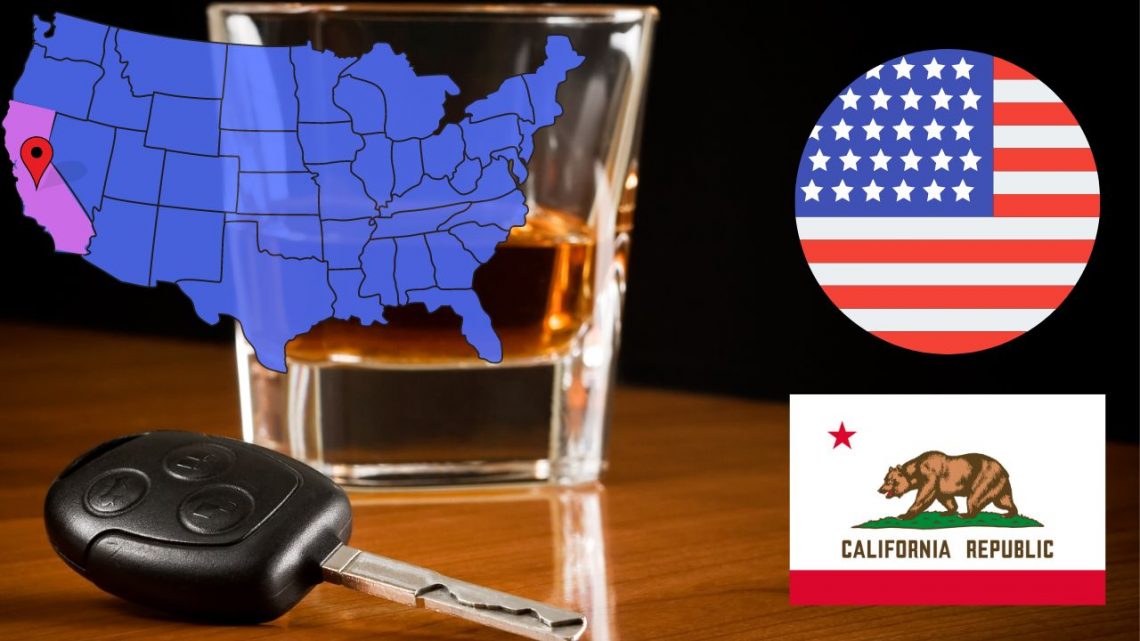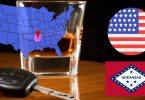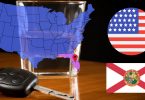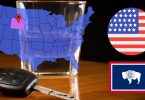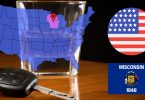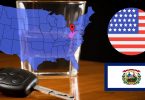In California, the legal limit for blood alcohol concentration (BAC) is set at 0.08%, which equates to 80 milligrams of alcohol per 100 milliliters of blood.
Before we go into the specifics of intoxicated driving in California, remember that this article is strictly for informational purposes. This page does not promote or encourage drunk driving in any state or place.
What is the Legal Alcohol Limit for Driving in California?
In California, the legal alcohol limits for driving vary depending on the driver’s license type and age. The state enforces different Blood Alcohol Concentration (BAC) thresholds to promote safe driving practices among all road users. Here are the specific legal limits for each category of drivers:
- Regular Drivers: The legal BAC limit is 0.08%. This applies to most private vehicle drivers over the age of 21.
- Commercial License Holders: For those holding a commercial driver’s license, the legal limit is lower, at 0.04%. This is to ensure higher safety standards due to the nature of their driving responsibilities.
- Drivers Under 21: California adheres to a “zero tolerance” policy for underage drivers. Therefore, the legal BAC limit for drivers under the age of 21 is 0.01% or lower.
These limits are part of California’s efforts to reduce alcohol-related accidents and enhance road safety for all.
Drink and Drive Penalties and Punishments in California
In California, the consequences of driving under the influence (DUI) can be severe and long-lasting. It’s crucial for drivers to understand these penalties and regularly check the official state website for updates. Below are key details regarding the suspension, revocation, and restrictions on driving privileges due to DUI offenses:
A. Suspension and Revocation for BAC Violations
- First Offense (0.04% BAC in Commercial Vehicle or 0.08% in Noncommercial Vehicle): 4-month suspension.
- Repeat Offenses (Within 10 Years): 1-year suspension.
- Court-Ordered DUI Probation: No measurable amount of alcohol (0.01% BAC) allowed. Violation results in a concurrent 1-year suspension.
B. Refusal or Failure to Complete a PAS or Chemical Test
- First Offense: 1-year suspension, or 2-year revocation if on DUI probation.
- Second Offense (Within 10 Years): 2-year revocation, or 3-year if on DUI probation.
- Three or More Offenses (Within 10 Years): 3-year revocation.
To reinstate driving privileges after APS suspension/revocation, the following steps are required:
- Pay a $125 reissue fee (CVC §14905).
- File proof of financial responsibility (e.g., SR 22, cash deposit, surety bond).
- Maintain proof of financial responsibility for 3 years.
Am I Eligible for Restrictions?
Commercial DL-holders: Must downgrade to a noncommercial DL (except motorcycle DL) for a restricted driving privilege. Restrictions apply to driving to/from DUI program only.
Restriction Options:
- Employment and DUI Program Activities Restriction: Eligible for first offenses with BAC of 0.04% or more in commercial vehicles, or 0.08% or more in noncommercial vehicles. Requirements include a 30-day suspension period, enrollment in a DUI program, filing an SR 22, and paying a $125 reissue fee.
- Ignition Interlock Device (IID) Restriction (Effective January 1, 2019): Applicable to offenses with BAC of 0.04% or more in commercial vehicles, 0.08% or more in noncommercial vehicles, or 0.01% while on DUI probation. Requirements include DUI program enrollment, filing an SR 22, installing an IID, and paying a $125 reissue fee.
How to Determine if Your Blood Alcohol Content is Legal in California
Identifying BAC Levels in California
In California, law enforcement officers primarily use two methods to determine a driver’s Blood Alcohol Concentration (BAC):
- Breathalyzer Test: This is the most common roadside test. The device analyzes a breath sample to estimate the alcohol concentration in the blood.
- Blood Test: In some cases, particularly when a breathalyzer is not feasible or its accuracy is in question, a blood test may be administered. This is a direct measurement of the alcohol level in the blood and is considered highly accurate.
Recommended Ways to Check Your BAC Level
As an experienced phlebotomist with a decade of expertise, I suggest two reliable methods for estimating your BAC:
- Use a High-Quality Alcohol Breathalyzer: I recommend the BACtrack S80, widely available in California. It offers professional-grade accuracy and is approved by the DOT & NHTSA and cleared by the FDA (510(k)). Keeping one in your car is a good practice, especially since people often underestimate their impairment level. The BACtrack S80 can provide a good indication of whether you are close to or exceeding the 0.08% legal limit.
- Utilize a BAC Calculator: Developed by myself and a team of phlebotomists, with assistance from web developers, we’ve created an online BAC calculator. This tool considers various factors like weight, gender, the amount of alcohol consumed, and the time frame of consumption to estimate your BAC.
Important Consideration
It’s essential to remember that while both the breathalyzer and the BAC calculator are useful tools, they do not provide 100% accurate results. They should be used as a guide to help you make responsible decisions about driving. If either method indicates you are near or over the 0.08% limit, it’s safest to avoid driving.
Ways to Avoid Driving with a High BAC in California

Driving with a high Blood Alcohol Concentration (BAC) is not only illegal but also extremely dangerous. To ensure your safety and compliance with the law, here are practical ways to avoid driving under the influence in California:
1. Utilize Taxi and Rideshare Apps
One of the easiest and most convenient ways to avoid driving after drinking is to use taxi and rideshare services. Here are some recommendations:
- Uber and Lyft: Widely available throughout California, these apps are user-friendly and offer a safe way to get home without the risks of driving.
- Local Taxi Services:
- In Los Angeles, consider using services like ‘LB Limousine” for a reliable and local option.
- In San Diego, ‘Cross Border Xpress (CBX)’ offers specialized services, especially helpful for cross-border travel.
These services are a click away on your smartphone and provide a hassle-free alternative to driving yourself.
2. Order a Designated Driver Service
If you’ve driven to a location but then consumed alcohol, a designated driver service is a smart choice. This way, you can get both yourself and your car back home safely. Here’s how you can find these services:
- In Los Angeles: ‘Driver.com‘ is a notable service that provides professional drivers to take you and your car back home.
- In San Diego and Other Cities: Simply Google “designated driver service” along with your city name. There are numerous local services that can assist you.
Using a designated driver service ensures that you avoid driving under the influence while also taking care of your vehicle.
Sticking to DUI Laws in California: Sad Statistics
In California, driving under the influence (DUI) of alcohol or any substance is strictly prohibited. The state’s stringent DUI laws are a response to alarming statistics: out of 3,847 traffic-related fatalities, about 30% involved drunk drivers.
Adhering to the legal Blood Alcohol Concentration (BAC) levels set by California is essential for safe driving. If you’ve been drinking, it’s always safer to avoid driving. Options like taking a taxi, using rideshare apps like Uber, or hiring a designated driver service are practical alternatives.
Staying informed about the latest DUI laws and regulations is important for all drivers in California. Regularly visiting the state’s official website can provide up-to-date information.
Even if you feel capable of driving after consuming alcohol, it’s important to remember that alcohol affects individuals differently. A breathalyzer is the only reliable way to measure your BAC accurately. If you suspect you’re impaired, it’s always best to choose alternative transportation methods.
Lastly, understanding and respecting California’s DUI driving restrictions is not just about avoiding legal consequences; it’s about ensuring your safety and the safety of others on the road. Always consider the risks before deciding to drive after drinking.

